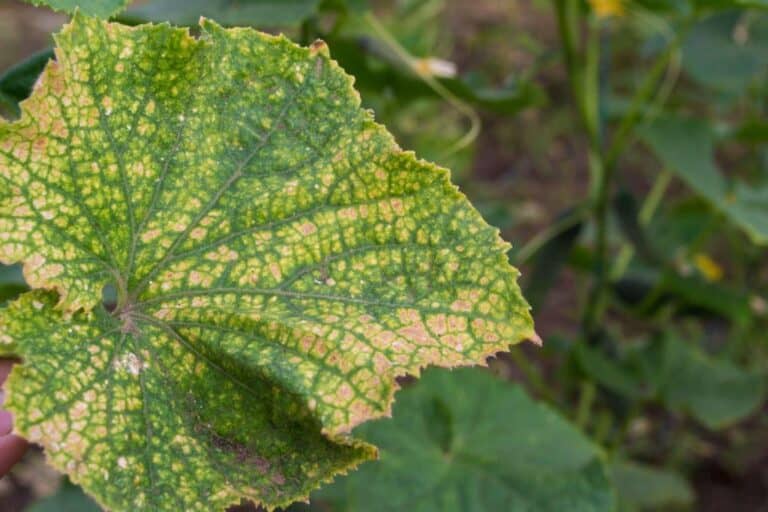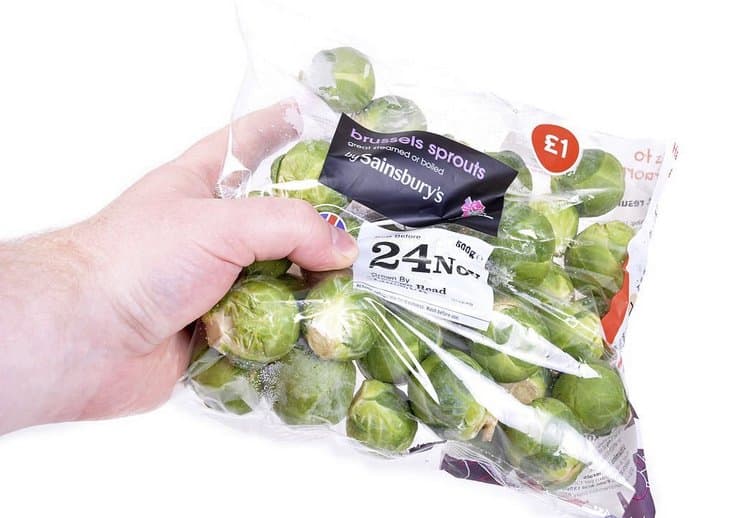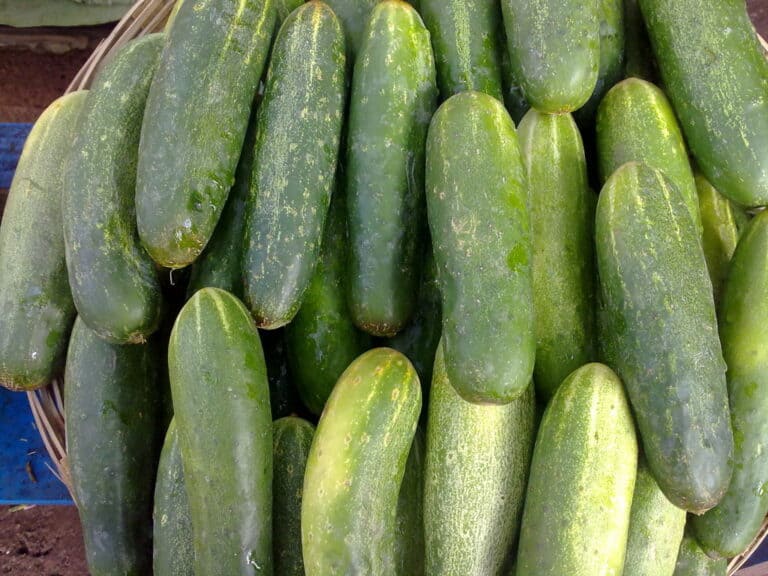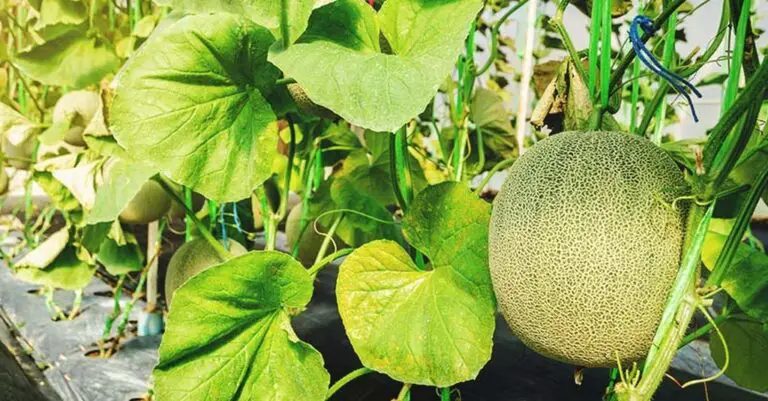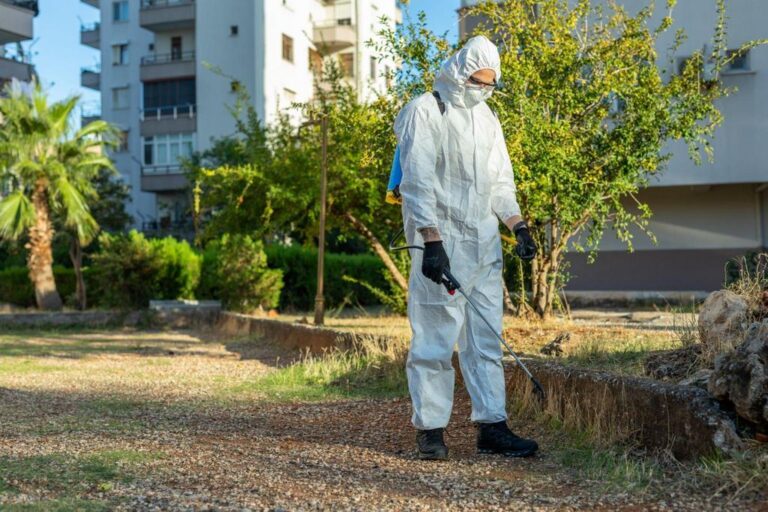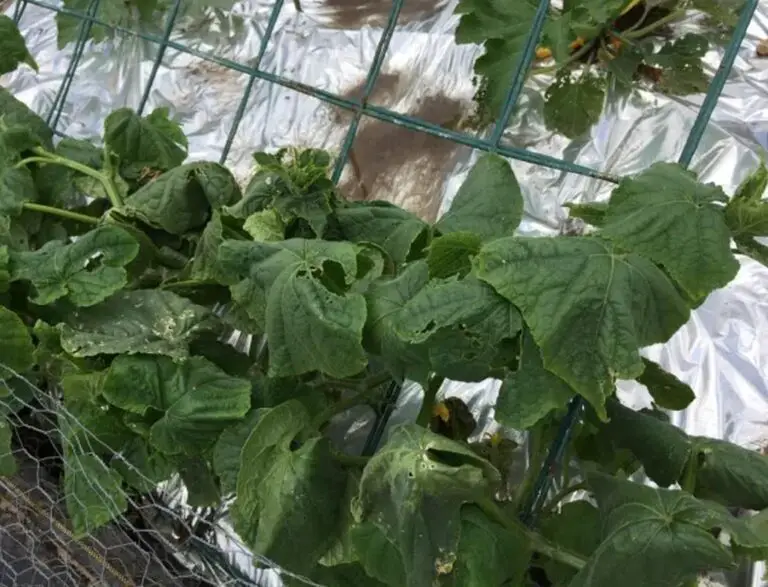How to Treat and Prevent Powdery Mildew on Rosemary Plant
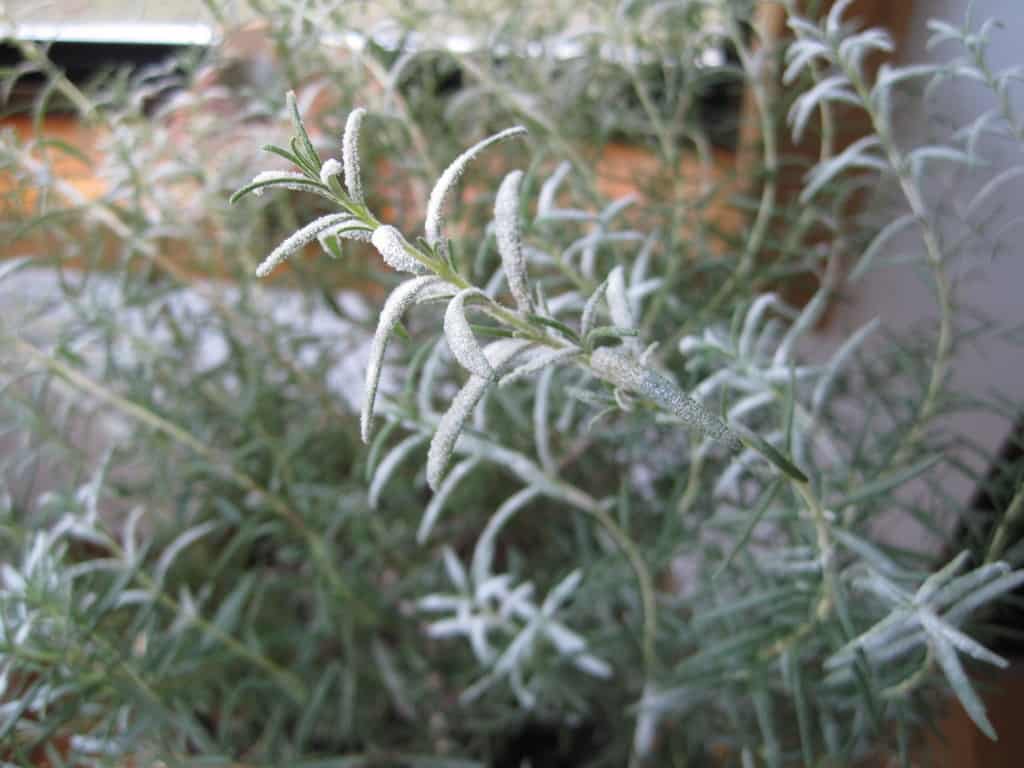
Powdery mildew may sound harmless, but it can wreak havoc on your rosemary plant. This fungal disease can make the leaves look bad with white powdery spots, slow growth and crop yield, and even make your rosemary less tasty and healthy.
But don’t despair! With the right knowledge and skills, you can treat powdery mildew on your rosemary plant and keep it from coming back.
So, are you looking for a way to treat and prevent powdery mildew on rosemary plants?
In this article, we’ll explain why it’s important to find a solution and how to do so. You’ll learn why prevention is better than treatment, what steps you need to take, and where to find answers.
So, if you’re wondering how best to treat and prevent powdery mildew on your rosemary plants, read on—you’ll find all the information you need here!
What Is Powdery Mildew?
Powdery mildew is a type of fungal disease that affects a wide range of plants, including fruits, vegetables, and ornamental plants. A white, powdery growth can be seen on the leaves, stems, and flowers of plants that have this disease. This growth, which is made up of spores from fungi, can quickly spread to other parts of the plant, hurting it and causing it to produce less.
The powdery mildew fungus can infect a plant at any stage of its growth, but is most common during warm, dry weather. It grows well in damp places and can stay alive in the soil for a long time. Once a plant is infected, the fungus begins to grow on the surface of the plant, releasing spores that can spread to other plants nearby.
Powdery mildew causes leaves to turn yellow and wilt, growth to slow down, and yield to go down. The fungus can also cause damage to fruit and vegetables, making them unmarketable. Powdery mildew can kill a plant in severe cases.
Powdery Mildew Symptoms in Rosemary Plant
The fungus that causes powdery mildew, Oidium neolycopersici, can infect rosemary at any stage of its growth and can cause significant damage to the plant if left untreated.
When rosemary plants are infected with powdery mildew, a white (or sometimes grayish) powdery growth appears on both sides of the leaves. This growth is made up of fungal spores and can spread quickly to other parts of the plant.
As the disease progresses, the leaves of the rosemary plant may turn yellow or brown and may become distorted or curled. The plant may also exhibit reduced growth and yield.
Powdery mildew can damage the rosemary plant from the inside. The fungus can get into the stem and branches and make them weak and breakable. As a result, the plant is more susceptible to damage from the wind and other environmental factors.
Since a picture is worth a thousand words, allow me to display some images of plants and herbs that have powdery mildew infestations.
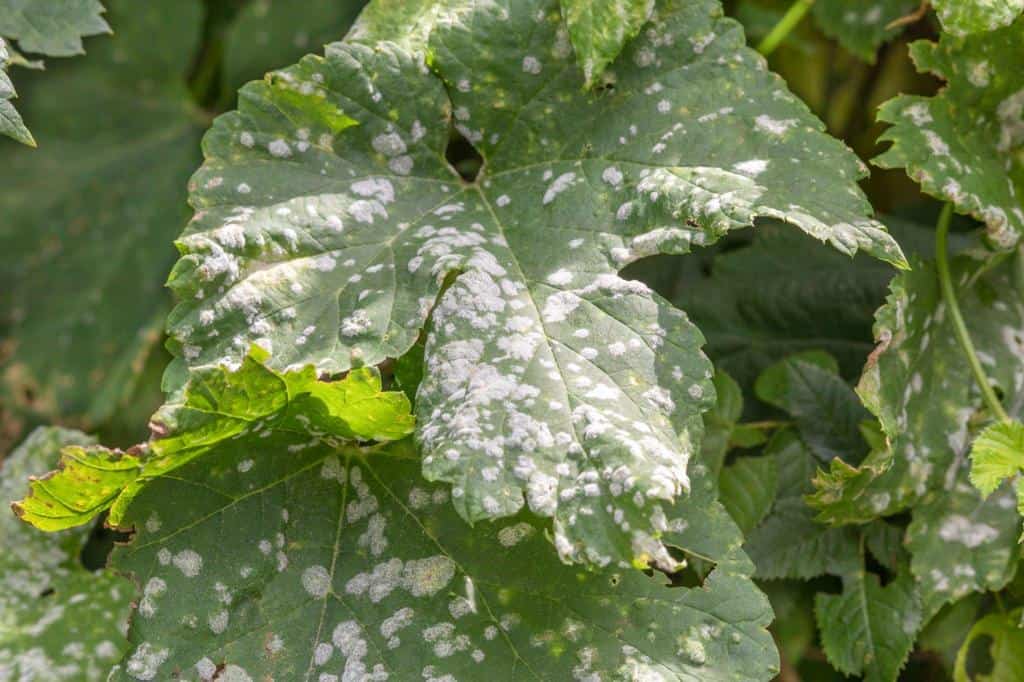
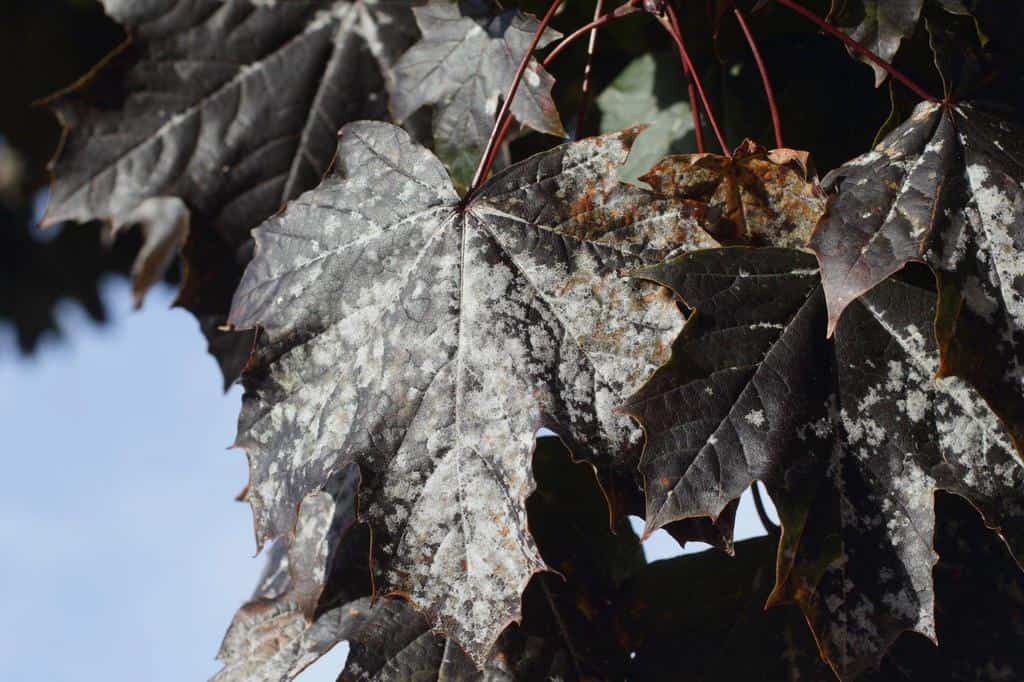

How to Prevent Powdery Mildew on Rosemary Plant
To keep rosemary plants healthy and productive, it’s important to keep powdery mildew away from them. Here are some things to do to keep rosemary plants from getting powdery mildew.
Cultural Practices to Prevent Powdery Mildew on Rosemary
- Planting rosemary in a well-draining, sunny location. Powdery mildew thrives in damp, shaded areas. So, providing your rosemary with good air circulation and plenty of sunlight can help to prevent the disease.
- Avoiding overcrowding of plants. Crowded rosemary plants are more likely to develop powdery mildew, as they can’t dry off properly after watering or rain.
- Avoiding high-nitrogen fertilizers. High levels of nitrogen in the soil can lead to lush, succulent growth that is more susceptible to powdery mildew.
Proper Irrigation and Fertilization Techniques
- Watering rosemary at the base of the plant and avoiding wetting the leaves. This prevents the formation of moisture on the leaves which is ideal for the growth of powdery mildew.
- Applying a balanced fertilizer at the recommended rates. Use a fertilizer that is low in nitrogen and high in phosphorus and potassium. This combination promotes healthy growth and reduces the risk of powdery mildew.
- Avoiding applying fertilizer during damp or humid conditions. Fertilizing during these conditions can make the plant more susceptible to powdery mildew.
Please keep in mind that powdery mildew infection can occur even with the best prevention methods. So, keep an eye on your rosemary plants so you can catch disease early and treat it right away.
Chemical Control for Powdery Mildew on Rosemary Plant
You may need to use fungicides to control powdery mildew on rosemary. Fungicides can be an effective way to control powdery mildew on rosemary. They work by either preventing the fungus from growing or by killing the fungus that is already present.
Some fungicides that work well against powdery mildew on rosemary might have this ingredients:
- Sulfur: a contact fungicide that works by physically covering the spores and preventing them from growing.
- Potassium bicarbonate: a contact fungicide that works by raising the pH of the surface of the leaf, making it difficult for the fungus to survive.
- Myclobutanil: a systemic fungicide that is taken up by the plant and distributed throughout the foliage, which can provide long-term control of powdery mildew.
Application instructions for fungicides:
- Always read and follow the label instructions for the specific fungicide you are using.
- Fungicides should be applied to the foliage of the rosemary plant when the temperature is below 85 degrees Fahrenheit to prevent leaf burn.
- Fungicides should be applied at the first sign of powdery mildew and repeated at the recommended intervals to maintain control.
- Fungicide-resistant powdery mildew can develop from overuse of fungicides, so use them only when needed and rotate types to avoid resistance.
Natural Control for Powdery Mildew on Rosemary Plant
Sometimes you need natural methods to control powdery mildew. This environmental-friendly approach should be implement first, as it is not involving potential hazardous chemical
There are several natural methods that can be used to control powdery mildew on rosemary, including:
- Neem oil. A natural fungicide that can be used to control powdery mildew. It works by suffocating the spores of the fungus and preventing them from growing.
- Baking soda solution. A mixture of baking soda and water can be used as a contact fungicide, it works by raising the pH of the surface of the leaf, making it difficult for the fungus to survive.
- Horticultural oil. A natural fungicide that can be used to control powdery mildew, it works by suffocating the spores of the fungus and preventing them from growing.
Can Rosemary Plants Recover From Powdery Mildew?
The answer is yes. Rosemary plants can recover from powdery mildew, but it depends on how bad the disease is and what steps are taken to stop it and treat it.
When powdery mildew gets on a rosemary plant, it’s important to act quickly to get rid of the disease. This can include the use of fungicides, which can be applied to the plant to kill the fungus. Ask a professional or an extension agent to help you choose the right fungicide and learn how to use it safely and effectively.
If the infection is caught early, the rosemary plant may be able to recover quickly with the right treatment. The plant may grow new leaves, and the infected leaves can be removed. With proper care and maintenance, the rosemary plant should be able to return to its normal growth and productivity.
But if the infection is bad enough, the rosemary plant might not be able to get better. The fungus can cause damage to the internal structure of the plant, making it weak and brittle. This can make it more susceptible to damage from wind and other environmental factors. In severe cases, the rosemary plant may die.
Can You Eat a Rosemary Plant that has Powdery Mildew?
In general, powdery mildew is not harmful to people. So, it is not toxic or poisonous to humans. The fungus that causes powdery mildew, Oidium neolycopersici, does not produce any known toxins that would make the plant dangerous to eat.
But it might not be a good idea to eat a rosemary plant that has powdery mildew for a few reasons.
A plant infected with powdery mildew can result in reduced growth and yield. This can make the plant less desirable as a food source. Powdery mildew can also make a plant look and taste bad.
Secondly, the fungus can cause damage to the internal structure of the rosemary plant, making it weak and brittle. Eating a plant that has been damaged in this way may not be as nutritious or flavorful as a healthy plant.
Conclusion
Powdery mildew is a common fungus disease that affects rosemary plants and can cause the leaves to appear powdery and white.
Powdery mildew can be prevented and kept under control with cultural practices like proper watering, fertilization, and keeping plants from being too close together.
Other methods for preventing it include planting rosemary in a sunny spot with good drainage, avoiding overcrowding and high-nitrogen fertilizers, and using the right way to water and feed it.
Chemical control includes using fungicides such as sulfur, potassium bicarbonate, and myclobutanil. Natural control includes using natural methods such as neem oil and baking soda solutions.

